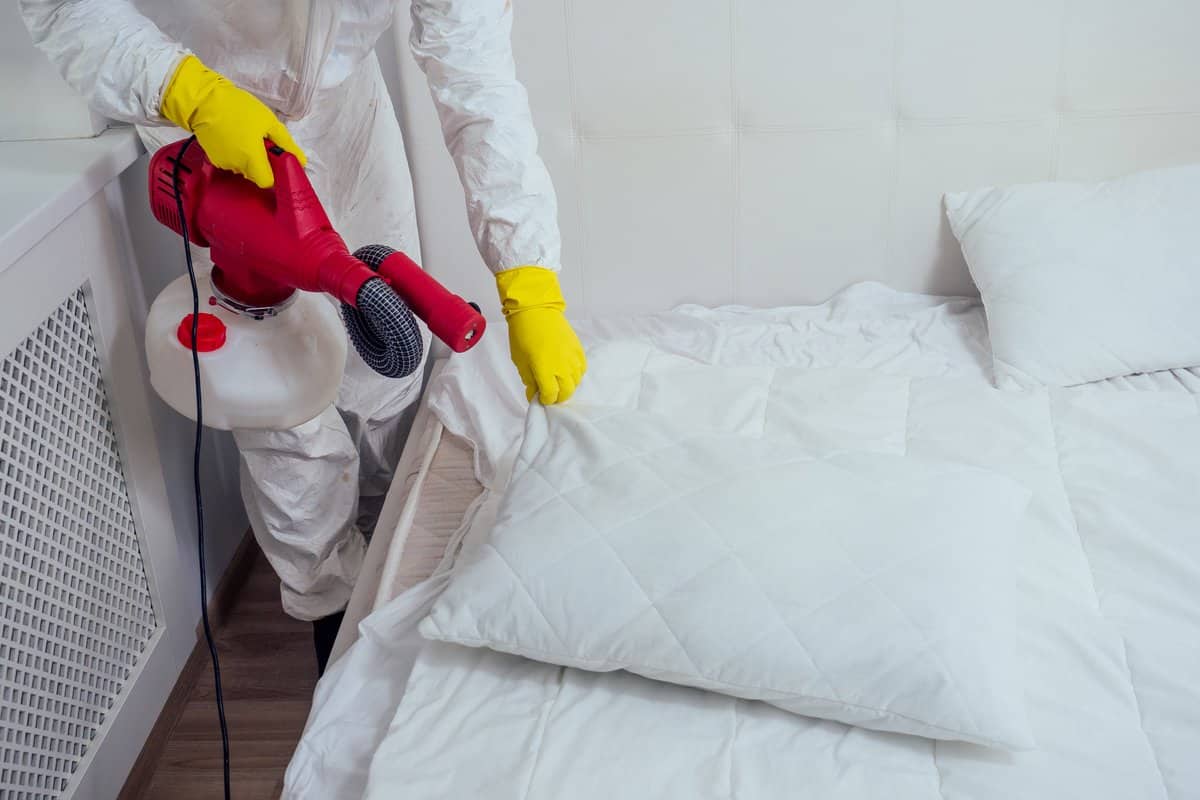Bed bugs – everything you need to know!
Bed bug bite. Literally. And infestations are on the rise. Especially as travel has opened up in recent weeks. Multiple times per week, we receive calls from customers with infestations. Bed bugs are seen as one of the more taboo pests. As people assume they infest dirty environments. However, that is far from the truth. Bed bugs only have one requirement when infesting premises. Keep reading to learn what that is. And discover 7 things you should know about this pest!
1. What are bed bugs?
Bed bugs are parasitic insects. Meaning they feed off live hosts. Typically humans and pets. And as the name suggests, they typically infest beds. Although, couches, chairs and carpets can be infested too. Their existence can be dated back to ancient Egyptian times.
Their average lifespan is ten months. Females can lay up to 500 eggs in that time span. Meaning it just takes one pregnant bed bug to cause a major infestation. And in 3 short months, an infestation will grow by 3 generations.
2. What do they look like?
Identifying bed bugs can be hard unless you know what they look like at all stages of their lifecycle. Adults are small, roughly 6mm. They are a flattened oval shape – similar to a disc. They are reddish-brown in colour. However, they become darker and rounder after feeding. Due to consuming blood.
The eggs are milky white and measure a millimetre in length. They are sticky and adhere in clusters to furniture. Eggs hatch in roughly two weeks. And a nymph emerges. Anatomically, nymphs look like miniature adults. However, they are initially transparent. Although, they gain pigment as they mature. As they go through a moulting process. This happens 5 times. And with each moult, they gain more colour. Moulting cannot happen without feeding. In an ideal environment, a nymph reaches adulthood in 4 weeks.
3. Why do bed bugs bite?
Bed bugs have to bite in order to feed. As they feed on fresh blood. Bed bugs are active at night – so this is when they bite. As their hosts’ sleep. Heat and carbon dioxide attracts them out of hiding. Using elongated beaks, they pierce the skin and withdraw blood. Feeding lasts from 3 to ten minutes. Once finished, they retreat to their hiding place. Emerging a week later, for their next meal.
4. What do the bites look like?
Most bites are relatively painless. Although, they later develop into red, itchy welts. They can be confused with flea bites. However, there are distinct differences between a flea bite and a bed bug bite. A flea bite has a red spot in the centre, while a bed bug bite doesn’t. And flea bites are mainly concentrated around the ankles. While bed bugs bite any area of exposed skin. Mosquito bites are fairly similar. However, if you are waking up with bites, chances are they are caused by bed bugs.
5. How do you get bed bugs?
Bed bugs enter the home in various ways. Firstly, used furniture can be infested with bed bugs. Especially beds, mattresses, sofas, couches and chairs. Additionally, bed bugs can enter your home on chairs or in books. As they are so small, they can stow away without being noticed. While they don’t nest, like ants or wasps, they do like to hide in crevices within a bed, mattress, or box spring.
Secondly, travel is a major cause of infestation. Even the most luxurious hotel isn’t immune from this pest. Using hard-cased luggage and inspecting your accommodation before unpacking can help you avoid bringing an unwanted hitchhiker home with you.
So while many think infestations are caused by uncleanliness, that is incorrect. Infestation is a result of an opportunistic pest, looking for a warm meal.
6. What are the signs of an infestation?
Waking up with itchy bites that weren’t there the night before is an obvious sign of an infestation. Other signs include:
- Dark, black faecal spots on bedding. Similar to ink dots
- Blood stains on bedding
- Egg shells or shed skins around the headboard of a bed
- An unpleasant musty, sickly smell. If a smell is apparent, this means the infestation is significant. Contact a professional ASAP.
If you suspect an infestation, remove all bedding and thoroughly check the bed. Check along the headboard and mattress seams. Examine the box spring, if you have one. Additionally, check the carpet, clothes, and any other upholstery. And even look in books.
7. How to get rid of bed bugs?
Bed bugs will not go away on their own. Once an infestation takes hold, they are not leaving unless you make them. DIY treatments are not effective against these pests. While cleaning may temporarily relieve the problem, it will not resolve it. Therefore, professional treatment is your best bet. Ultimate Pest Control provides a fast and effective eradication treatment. For more information, contact us today!

